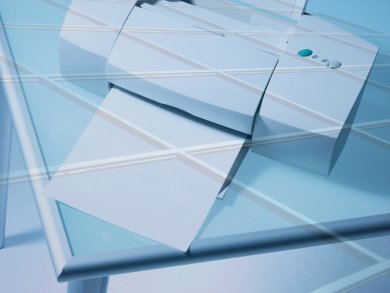One of the most promising materials for energy collection in solar cells is thin films of chalcopyrite, CuInxGa1−xSe2. Chalcopyrite has extraordinary solar efficiency: a 1–2 micron layer has the same efficiency as a 50-micron-thick silicon layer. However, the most common technique to fabricate these layers — vapor phase deposition — wastes a lot of the material.
Chih-hung Chang and co-workers, Oregon State University, USA, have applied inkjet printing technology to this material for the first time. They created a precursor ink that was air-stable and able to be converted to chalcopyrite under atmospheric pressure. With this, the team could create thin film solar cells with respectable efficiency (ca. 5 %) and less waste. The team believes that an efficiency of 12 % will be possible with this technique, which would make the solar cells commercially viable.
- Inkjet printed chalcopyrite CuInxGa1−xSe2 thin film solar cells
W. Wang, Y.-W. Su, C.-h. Chang,
Sol. Energy Mater. Sol. Cells 2011, 95(9), 2616-2620.
DOI: 10.1016/j.solmat.2011.05.011


